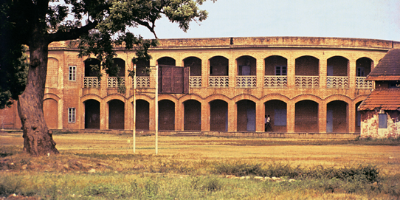may 10, 1857 - First war of independence
Description:
This was considered as the beginning of country’s struggle for freedom against British. The revolt of sepoys at Meerut became significant as it was the immediate cause of the revolt with the introduction of Enfield rifle which was greased with the fat. As the rumour spread that this fat is of cows and pigs, it was considered as a taboo for both Hindu and Muslim sepoys. When it becomes mandatory, Indian soldiers in ceased. This revolt soon spread almost all the significant places with great participation of the people. This revolt has interlinkage with the political, social, religious, economic and military discontentment.Key Figures (Actors/agents ) involved:
The sepoys, Mangal Pande (Barrackpore), Mughal emperor Bahadur Shah II (Delhi), Nana Sahib, Tantia Tope (Kanpur), Begum of Oudh (Lucknow), Rani Laxmibai of Jhansi (Central India), Lord Dalhousie and Lord Canning.
Main issue:
*Sepoys mutiny at Meerut, introduction of Enfield rifle greased with fat and when it hurt the sentiments of both Muslims and Hindus.
*Outbreaks in Barrackpore, Delhi, Kanpur, Lucknow.
Outcome:
*End of East India Company’s rule
*The governor general was made Viceroy.
*The queen Victoria’s Proclamation
*Religious freedom.
*Reorganization of the Army (the proportion of the Europeans to Indians in the army was raised).
*End of Peshwaship and the Mughal Rule.
*Economic Exploitation.
*The policy of divide and rule which later led to partition in Bengal, the whole country.
*Rise of Nationalism.
Added to timeline:
Date:
may 10, 1857
Now
~ 168 years ago
